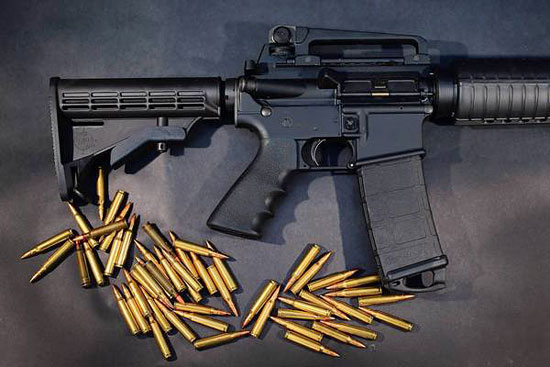Taking aim at weapons
January 4, 2013
In the aftermath of last month’s horrific Sandy Hook Elementary School shooting, we once again find ourselves talking about how we must reduce gun violence and confront the easy access our society provides to weaponry that, in the wrong hands, can inflict mass carnage. As both a member of the Los Angeles City Council and the county Board of Supervisors, I’ve long been a proponent of sensible gun regulation—especially when it comes to automatic and semi-automatic firearms, including assault rifles, that gunmen have wielded in several of the more recent shooting tragedies. But they’ve also been used plenty of times in the past.
After the Newtown murders of 20 children and six adults, I was instantly taken back to an incident here that had the potential to be even worse than it was. In 1999, a gunman opened fire with an assault rifle at the North Valley Jewish Community Center in Granada Hills, wounding three children, a teenaged camp counselor and a receptionist. He was accused of later killing a mail carrier in Chatsworth.
This came just two years after two bank robbers in North Hollywood pinned down overmatched Los Angeles police officers with automatic weapons fire before the criminals were finally killed. Some of those firearms were traced to the nation’s largest gun show—held on the L.A. County-owned fairgrounds in Pomona. It made no sense to me that public property would be used to sell weapons of all kinds, some of which would end up on our streets and contribute to what was then an epidemic of violent crime.
So I proposed a ban on the sale of guns on any county property, including the fairgrounds. Two of my colleagues, Supervisors Gloria Molina and Yvonne Burke, joined me in passing this historic ban. The gun show owners filed suit against the county. But the California Supreme Court in 2002 affirmed our right to ban the sale of guns on our publicly-owned property.
More than a decade earlier, in early 1989, I successfully sponsored an emergency ordinance banning the sale and possession of semi-automatic weapons in the City of Los Angeles. Not only were they becoming the weapon of choice for L.A.’s notoriously violent street gangs, but just a month earlier, a gunman in Stockton, armed with an AK-47, had killed five schoolchildren and injured more than two dozen. I felt compelled to act because our Sacramento lawmakers had procrastinated for too long on legislation banning assault weapons. The City Council approved my proposal, and weeks later, the State legislature acted, fearing that hundreds of cities would each pass their own bans.
I’ve always believed there are two principal reasons to responsibly regulate gun sales in our communities.
First, the harder we make it for people to get their hands on military-style assault weapons, the less likely it is that such weapons will be used. Have these laws, passed both locally and nationally, made a difference? Did they save lives? Undoubtedly they did, although we’ll never know how many. But if these restrictions have saved one life, then it’s worth it. I’ve been around long enough to know that one of the great shortcomings in our society is that too many of us make the perfect be the enemy of the good. While no one law or regulation will completely eliminate gun violence from our society, that’s no reason to do nothing. The one guarantee we have is that if we don’t try, we’ll get no results.
The second reason, which is rarely talked about, is one of messaging. Leaders and opinion makers in politics, religion, business, public health, law enforcement and elsewhere make a difference when they take a public stand on an issue of this societal magnitude. The Board of Supervisors sent a strong message when it banned the sale of guns on county property, not only because it might save lives but because by doing so we were saying that this kind of activity is not acceptable. Just as we’ve changed the culture of smoking in our country over the last generation, the culture of easy access to military-style assault weapons can be changed as well. When the largest county in the nation says “no” to the sale of guns on its property, it’s taking a giant step toward changing that culture.
That’s why I strongly support California U.S. Senator Dianne Feinstein’s plan to reintroduce her federal ban on assault weapons, which expired in 2004. If approved, her legislation will not just save lives in the short run, it will also send a clear message that enough is enough, that weapons with the devastating power to take lives and kill dreams in Newtown, Aurora, Columbine or San Fernando Valley have no place in our communities. When we ban assault weapons, we begin to stigmatize their ownership. When we allow them on the free market, we’re essentially saying that these weapons are consistent with the values we collectively hold dear. Well, in any civilized society, these values should never trump the value of a human life, and that’s why I hope you’ll join me in supporting Senator Feinstein’s efforts.
Posted 1/4/13













 405 bridge work causes a stink
405 bridge work causes a stink





